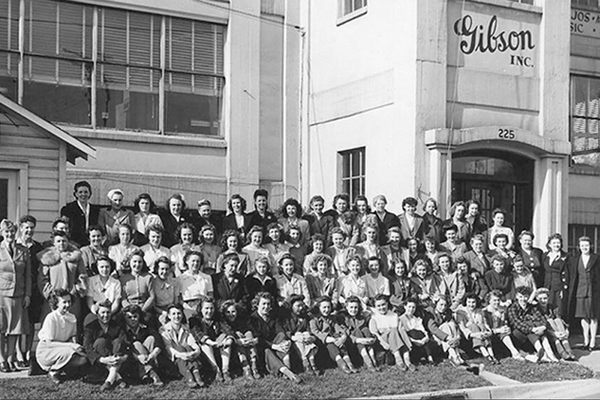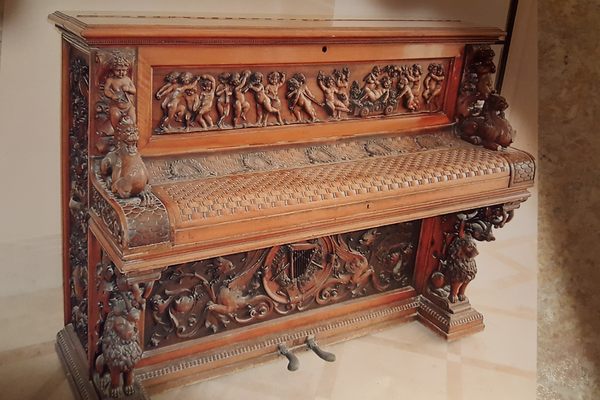When the Pianos Went to War
Steinway & Sons’ Victory Verticals were tougher than your average upright.
Banging out a melody on the ivories doesn’t seem like it has anything to do with winning a war, but that doesn’t mean that pianos haven’t had a place in the American military. New York–based Steinway & Sons even had a model of upright piano—known as Victory Verticals or G.I. Steinways—that were built specifically for troops in World War II.
During the war, the U.S. government essentially shut down the production of musical instruments in order to divert vital resources such as iron, copper, brass, and other materials to the war effort. Yet the government also determined that the war effort ought to include entertainment that could lift soldiers’ spirits. But just any old piano wouldn’t do. They needed ones hardy enough to withstand the trying conditions out in the field—including being packed into a crate and dropped out of a plane. “That music was deemed to be such a powerful morale boost that pianos were actually built to be parachuted around the world is incredible,” says Jonathan Piper, manager of artifacts and exhibitions at the Museum of Making Music in Carlsbad, California, which has a Victory Vertical in its collection. Steinway & Sons—the president of which had four sons in the military at the time—had shifted its efforts to constructing tails, wings, and other parts for troop transport gliders before the commission for the rough-and-ready pianos came through.

The company was famous for its pianos, but those finely tuned models weren’t well-suited to where soldiers were stationed, including in the tropics. “While preserving a high level of craftsmanship, Steinway designed a piano that was rugged and durable,” says Piper, and they had to be economical in their use of materials. That started from the ground up: The Victory Verticals didn’t have legs like most upright pianos, Piper says, because they wouldn’t have withstood an airdrop. Other special features included water-resistant glue and anti-insect treatments, keys covered with celluloid instead of ivory, and bass strings wound in soft iron instead of the traditional copper. They were designed to contain only a tenth as much metal as a normal piano. There were also handles placed under the keybed and the back, so that four soldiers could carry the 455-pound instruments. “And beyond all that, the instrument is visually interesting,” Piper says. “Because of its purpose-built design, the Victory Vertical has an elegant simplicity. Then there’s the colors: Unlike the vast majority of pianos that come in a black or dark wood finish, the Victory Vertical was painted in olive green [like the example at the museum], blue, and gray.”
By the end of the war, Steinway had produced about 5,000 Victory Verticals, roughly half of which went to military service. (The others were sold to schools and churches.) Piper notes that the specially designed instruments were an incredible moment for the makers of musical instruments, and their resilience through the war years. But more remarkable were the moments of comfort, joy, and camaraderie those pianos created in difficult times. The company has a 1943 letter from a Private Kenneth Kranes, stationed in North Africa, to his mother back in New York. “We all got a kick out of it and sure had fun after meals when we gathered around the pianna [sic] to sing,” he wrote, just a week before he was killed in battle. “I slept smiling and even today am humming a few of the songs we sang.”





































Follow us on Twitter to get the latest on the world's hidden wonders.
Like us on Facebook to get the latest on the world's hidden wonders.
Follow us on Twitter Like us on Facebook